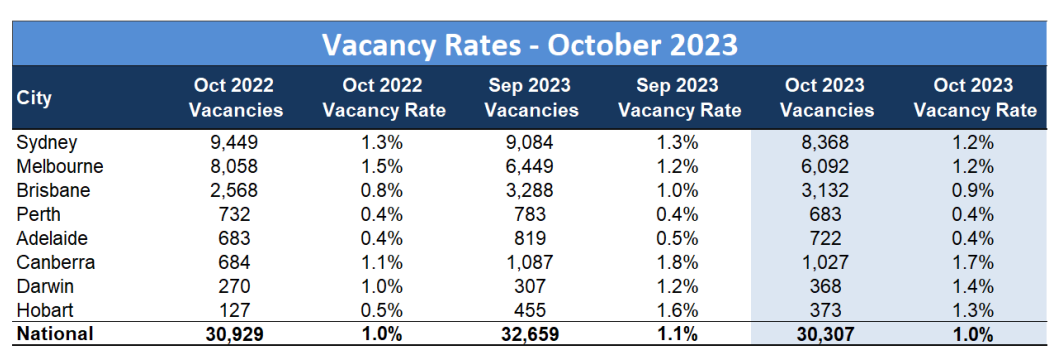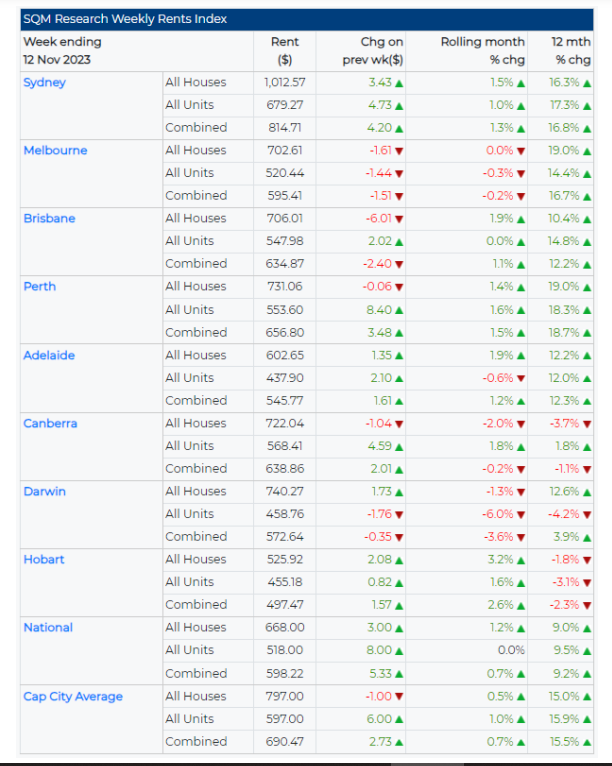

The national residential property rental vacancy rate has plunged to a mere 1% in October, SQM Research has reported.
“After a minor reprieve earlier this year, we are back to the record low in rental vacancies of 1%,” said Louis Christopher (pictured above), managing director of SQM Research. “Vacancies have been tightening again across the nation. They are tightening in our regions as well as our cities.
The ongoing rental crisis is underscored by a significant reduction of 2,353 available rental dwellings, bringing the total vacancies across the country to just 30,307.
Major capital cities have borne the brunt of this housing shortage, with Sydney, Brisbane, and Hobart experiencing decreases in rental vacancy rates during the month, standing at 1.2%, 0.9%, and 1.3%, respectively.
In Sydney CBD, the rental vacancy rate further dropped to 3.8%. Similar reductions were observed in Melbourne CBD and Perth CBD, with vacancy rates now standing at 4.8% and 0.9%, respectively.
Most regional areas experienced declines in rental vacancy rates, including the North Coast of NSW and the Sunshine Coast, where vacancies dropped to 1.2% and 0.9%, respectively. The exception was Northern SA, where there was an increase to 0.6%.

In the 30 days to Nov. 12, asking rents in capital cities bumped up by 0.7%, contributing to a considerable 15.5% increase over the past year. House rents rose 0.5% over the month, with a 12-month increase of 15%; while unit rents had a more rapid 1% increase over the last 30 days and a 15.9% rise over the past 12 months.
The national median weekly asking rent for combined dwellings is now $598.22. In capital cities, it stands at $690.47. The median rent for a capital city house is $797 a week, while the rent for a capital city unit is $597 a week. Sydney houses command the highest rent at $1,012.57 a week, while Adelaide units offer the most affordable rent at $437.90 a week.
SQM Research data also showed that in November, Melbourne experienced a slight dip in rents, with a 0.2% decrease for combined dwellings. Darwin also saw a notable decline in the asking rent for combined dwellings, down 3.6%, driven mainly by a significant 6% decrease in unit rents.

Christopher said Australia’s runaway population growth since 2022 has undeniably played a direct role in the country’s rental crisis and that it’s very unlikely that rents will ease over the next six months.
“Most likely, market rental increases will continue to rise between 10 to 15%,” he said in a media release. “Such rises will continue to work against the RBA’s objective of bringing back inflation to 2% to 3%. Given 2024 is very likely to see a fall in dwelling completion to about 153,000 dwellings, the only real prospect of having some relief in the rental market next year is a cap on migration rates.”
Get the hottest and freshest mortgage news delivered right into your inbox. Subscribe now to our FREE daily newsletter.
